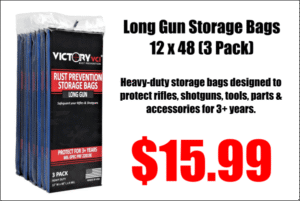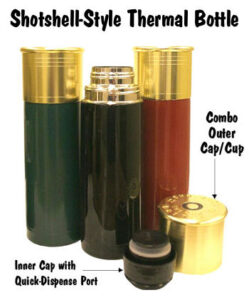Firearms enthusiasts should always wear hearing protection when shooting or visiting a range. Even a few minutes of sound exposure without protection can have long-lasting negative effects. Consider “doubling up”, wearing quality muffs with good foam plugs. This will allow for maximum sound reduction – up to 5-6 dB quieter compared to just wearing muffs. You can still hear range orders if the muffs have filtered microphones to block extreme sounds. How Loud are Gunshots?A pistol shot can reach 160 decibels, and rifle shots can be louder than that at over 170 dB. You can permanently damage your hearing by firing a few shots. 160 dB exceeds the OSHA threshold for safe noise levels by 20 decibels. It is important to wear hearing protection whenever you are near firearms that are being fired. “Science tells that continuous noise of 85 decibels for eight hours can cause permanent hearing loss. Even worse, sudden spikes of 130 decibels and higher can cause permanent damage to your hearing instantly.” Source: NRA blog.
This video from the American Suppressor Association explains how gunshots can reach 160-170 decibels. This is high enough to have permanent effects. (See: 00.20 time-mark). The Risk of Hearing Damage Hearing damage can be progressive and irreversible. This is a serious issue for shooters. The NRA Blog warns that you may not even be aware that you are damaging your hearing. Hearing loss can occur gradually and go unnoticed for years before symptoms become severe. By then, damage has been done. When you are around gunshots or are shooting firearms, you must wear hearing protection. We recommend a set of tapered earplugs topped with ear-muffs for ultimate protection. There are times when you might prefer a lighter hearing protection that is easily removed. If you are a rangemaster, waddie, or an observer who is standing behind the firing line, good muffs and plugs can reduce the sound by up to 33 dB. Sound Levels of Common Noises: 9mm pistol: 160 dB Jet engine (near) 140 dB.22LR pistol: 134dB Normal human threshold for pain: 120dB Noisy nightclub: 110db Riding motorcycle at 65mph: 103db Power lawnmower 95db Hearing damage possible 85db (sustained over 8+ hours). Ringing telephone: 80db Normal conversation 60db Hearing Protection Product Reviews. To get the best protection, use good earplugs underneath electronic muffs. Electronic earbuds can also provide protection but they do not offer the same benefits as good muffs. Some noise energy is transferred through bone conduction. The videos below evaluate a variety of earmuffs that are currently available. Some big muffs have a 30 dB noise reduction rating (NRR), whereas thin muffs might only have a NRR of 22-23 dB. The decibel scale is a logarithmic scale, so experts say that a 3dB increase in sound energy represents twice as much. This means that even a small increase in decibels can have a big impact on the noise level and the potential for hearing damage. The impact of sound on hearing health is doubled for every 3 dB increase in sound level. For example, 63dB is twice louder than 60dB. The exposure time must be reduced by half for every 3dB increase in noise level. Source: Institution of Occupational Safety and Health. Dr. William W. Clark is the Director of Washington University and he says that hunters should use sound protection. School of Medicine’s Audiology/Communication Sciences Program, a “serious threat to hearing comes from recreational hunting or target shooting”. This is due in part to the fact many people do not use traditional hearing protection like earplugs or earmuffs, because they want to hear their surroundings. Numerous studies have shown that 70 to 80% hunters never use earplugs and earmuffs. Nearly half of target shooters also don’t wear hearing protection. It should not be surprising that hunters are seven percent more likely than the general population to suffer from high-frequency hearing loss for every five years they hunt. We recommend that hunters wear quick-insert earplugs on a neck cord. These can be quickly deployed as you get ready to shoot. You can also get a neckband with earbuds that is lightweight, such as the Howard Leight Quiet Band (QB2HYG), Sellstrom Band or 3M Safety Band. These all have good Noise Reduction ratings of 25 dB and higher. These lightweight bands can be worn around your neck to allow for quick deployment.

















